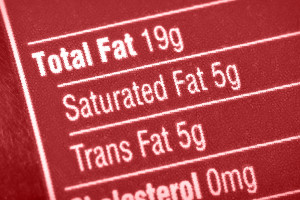AARP Hearing Center
FDA to Food Industry: Get Rid of Those Trans Fats
By Candy Sagon, June 17, 2015 08:00 AM

Artificial trans fats have helped the food industry since the 1950s enhance all kinds of not-so-healthy processed food; the artery-clogging fats have also contributed for decades to the country’s No. 1 cause of death — heart disease.
On Tuesday, the Food and Drug Administration finally put a plan in place to ban trans fats from food — an anticlimactic move considering most food companies have reduced or eliminated trans fats thanks to a decade or more of pressure from health and consumer groups.
The agency gave food companies until 2018 to phase out all partially hydrogenated oils — the main source of trans fats — from their products.
Get the latest tips on staying healthy — AARP Health Newsletter »
The FDA said its decision was based “on a thorough review of the scientific evidence,” including a 2002 Institute of Medicine report that found “there is no safe level” of trans fats and urged people to “eat as little of them as possible.”
Walter Willett, chair of the department of nutrition at Harvard University’s school of public health, called the action “great news,” telling the Washington Post, “There is no one in his right mind who could claim that trans fats are generally regarded as safe. This was really the biggest food processing disaster ever. The human toll has got to be in the millions.”
The FDA’s announcement also drew praise from public health advocacy groups that have long pushed for a ban, including the Center for Science in the Public Interest, and from the American Heart Association, which called the new regulations a “historic victory for the nation’s health,” the Post reported.
Trans fats are made by adding hydrogen gas to vegetable oil to keep it solid at room temperature. It’s a process that emerged a half-century ago as a way to make processed foods, like baked goods, taste better and stay fresher. More recently, it’s been found in canned frosting, pie crust, biscuit mix, margarine, microwave popcorn, cookies and fried fast food, including doughnuts.
But trans fats raise the level of harmful LDL cholesterol and the risk of heart attack. Finally eliminating trans fats from the American diet could prevent 7,000 to 10,000 heart attacks a year and 3,000 to 7,000 deaths from coronary heart disease, the Centers of Disease Control and Prevention has reported.
Since 2006, manufacturers have been required to include trans fat content information on nutrition labels, although tiny amounts were still allowed. A product could contain up to half a gram per serving and the label could still say “0 grams” of trans fat. Eat several servings of that food, however, and those small amounts could add up.
In 2013, the FDA made a preliminary decision that trans fats no longer fell in the agency’s “generally recognized as safe” category, which covers the additives manufacturers can add to foods without FDA review. Tuesday’s action made that decision final.
Get discounts on prescriptions, health exams, eye care and more — AARP Member Advantages »
The Grocery Manufacturers Association, an industry trade group, said the three-year window provides time to reformulate products, although the group noted that companies have already reduced their use of trans fats by more than 86 percent. Companies may also petition the FDA to allow small amounts of trans fats in some products.
The FDA estimates that trans fat consumption decreased 78 percent between 2003 and 2012, thanks to labeling requirements and food companies’ reformulating their products because of public health concerns. Still, a report in May by the Environmental Working Group estimates that trans fats are in 27 percent of the processed food we buy.
Which products still contain trans fats? Check out this Pinterest “Trans Fat Wall of Shame” from the Center for Science in the Public Interest.
Photo: firebrandphotography/iStock
Also of Interest
- Two New Cholesterol Drugs Get Advisory OK, Despite Doubts
- 12 Tips to Drop Those Pounds Quickly
- Get Involved: Learn How You Can Give Back
- Join AARP: Savings, resources and news for your well-being
See the AARP home page for deals, savings tips, trivia and more.































































